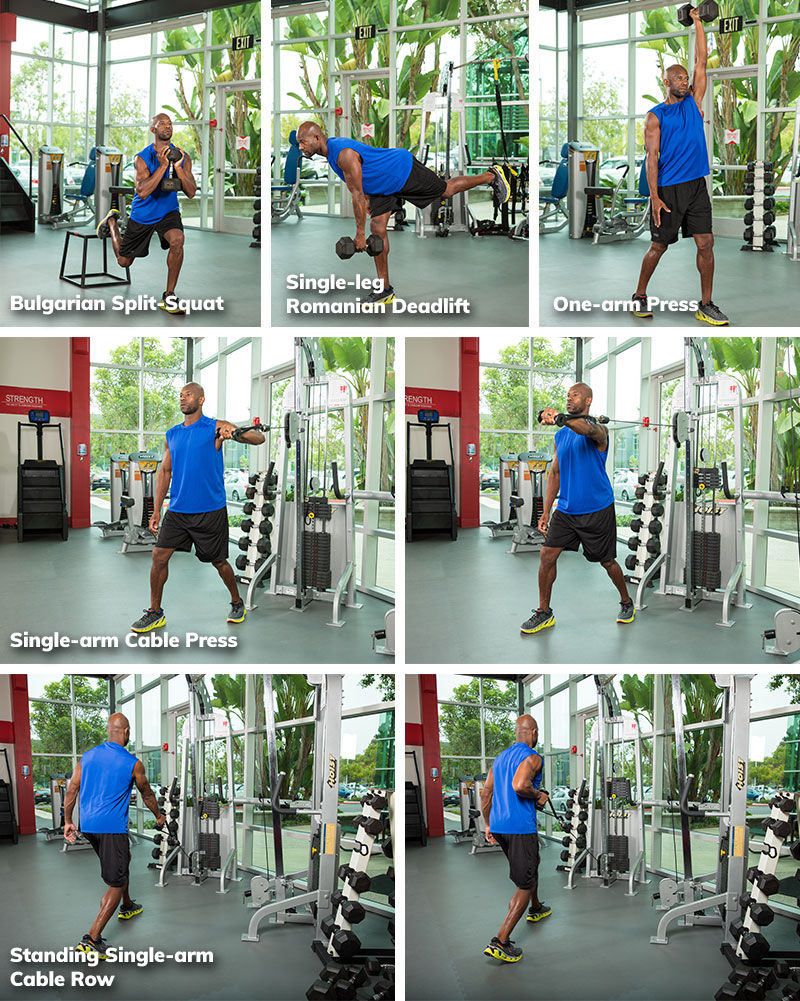What can the movie Goodfellas teach us about working out? Released in 1990 and starring Ray Liotta, Robert De Niro and Joe Pesci, Goodfellas was nominated for an Academy Award for Best Picture, and Pesci won the Oscar for Best Supporting Actor. It’s one of those movies that many people will watch simply because the story is so compelling and the acting is spectacular.
Now how does that relate to exercise? Even though it is widely recognized by the American Film Insititute as one of the best movies of all time, no matter how many times you watch Goodfellas, it becomes a little less interesting with each viewing because you know exactly what is going to happen and when. The same is true when you work out—the more often you do a particular exercise or workout routine, the less your muscles respond to the stimulus.
Repeatedly performing the same exercises with every workout causes the body, specifically the nervous system responsible for activating the muscles, to adapt to applied stimulus, which eventually leads to diminished results. The technical term for this effect is accommodation, which is often referred to getting stuck on a plateau. Whichever term you choose, the outcome is the same: No matter how creative or intense the workout, your muscles will stop responding to the exercises, much like your brain adapts to watching the same movie over and over again.
If you find you’ve been doing the same exercises for a while and are stuck on the proverbial plateau, here are five exercise swaps you can use to enhance your workouts. To add an extra boost, each of the exercises focuses on just one limb at a time, which allows you to focus all of the nervous system activity into those specific muscles. This is an effective strength-training strategy than can help you bust through any plateau.
|
Old Exercise |
New Exercise |
Reasons to do it |
|
Lunges |
The Bulgarian Split-squat emphasizes the glutes, hamstrings and adductors to create hip and knee extension during the upward phase of movement in the front leg. The key is to sink back into the hip during the lowering phase and push your foot into the floor as you return to standing.
Hold a single dumbbell (or kettlebell) in front of your chest. Perform eight to 10 reps on each leg, resting for 45 seconds after completing reps on both legs. Perform three to four sets. |
|
|
Inner thigh, seated |
Performing the seated adductor exercise can make you feel like your using your adductor muscles, but it’s not actually using them in the way they actually work. To train these muscles most effectively, it is best to use movements that keep your foot planted on the floor.
Select a weight that will make eight to 10 reps challenging. Complete the reps on each leg and then rest for 45 seconds; complete three to four sets. |
|
|
Shoulder press |
Doing shoulder presses with your arms out to the side could cause an impingement injury. A one-arm shoulder press, however, places the emphasis on one shoulder at a time, which allows you to develop strength in the hips, core and shoulder. Because all of these body parts are connected, it’s a good idea to train them all at the same time.
When doing this lift, make sure your palm and elbow face the midline of your body (this ensures proper shoulder mechanics). Select a weight that will make six to eight reps difficult. When holding the weight in your right hand, stand with your right foot forward. Begin the movement with your left foot pressing your body weight from the left leg to the right as you lift the weight overhead. To lower the weight, pull your elbow back down to your rib cage. Complete reps on each arm, rest for 45 seconds and repeat for three to four sets. |
|
|
Chest press |
Doing the bench press too often can create a shoulder injury because lying on a bench can limit the motion of the shoulder joints as the weight is lowered. Doing a standing cable press not only develops strength in the chest, but it also engages the muscles of the core to keep your spine and hips stable while pressing the weight.
Place the cable at shoulder height and use a weight that will make eight to 10 reps difficult. Rest for 45 seconds after performing reps on both arms and complete three to four sets. |
|
|
Seated back row |
When performing a seated back row, you miss the opportunity to train the muscles of your hips and core. A single-arm standing back row forces your hips and deep spinal stabilizers to work harder to keep your body stable as you pull the weight.
Set the cable low to the floor and use a weight that will make eight to 10 reps difficult. Rest for 45 seconds after performing reps on both arms and complete three to four sets. |

Alternating your workout routine with a variety of exercises challenges your muscles to work differently and ensures that you will continue to make the desired changes to your body. Selecting exercises that involve only a single limb at a time can enhance this effect because all of your energy will be focused on those muscles. The cool thing about doing single-limb exercises for a period of time is that when you go back to using both limbs at the same time you will find that your overall levels of strength have increased.
Deliver the individualized programs people need to adopt long-term, healthy behaviors with ACE’s Personal Trainer Certification.




 by
by 









 by
by